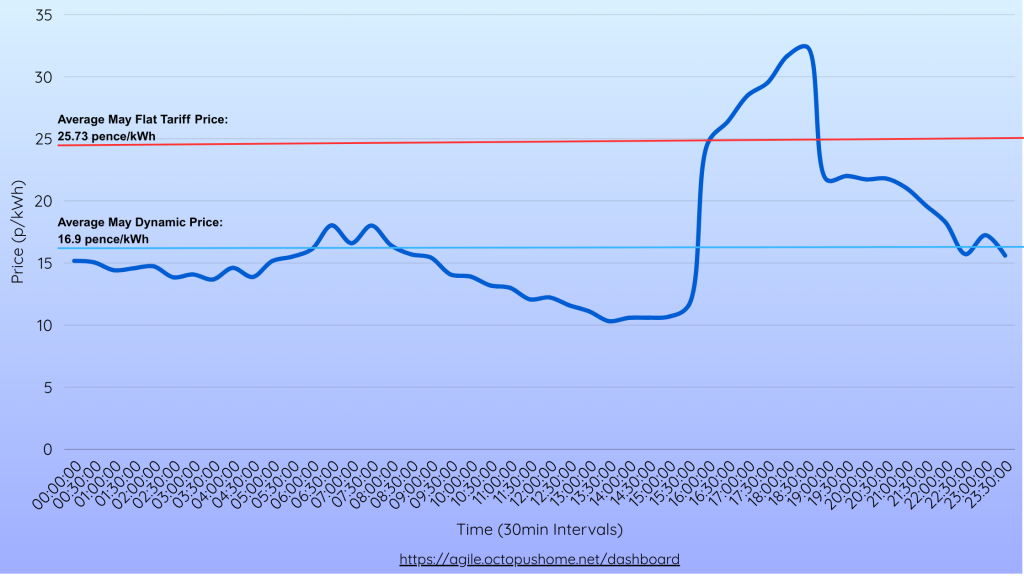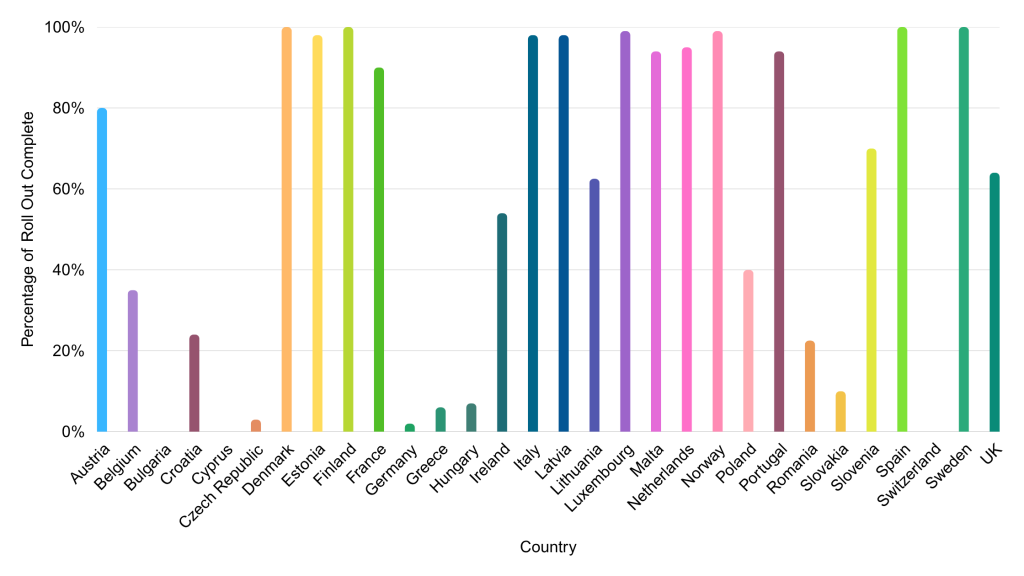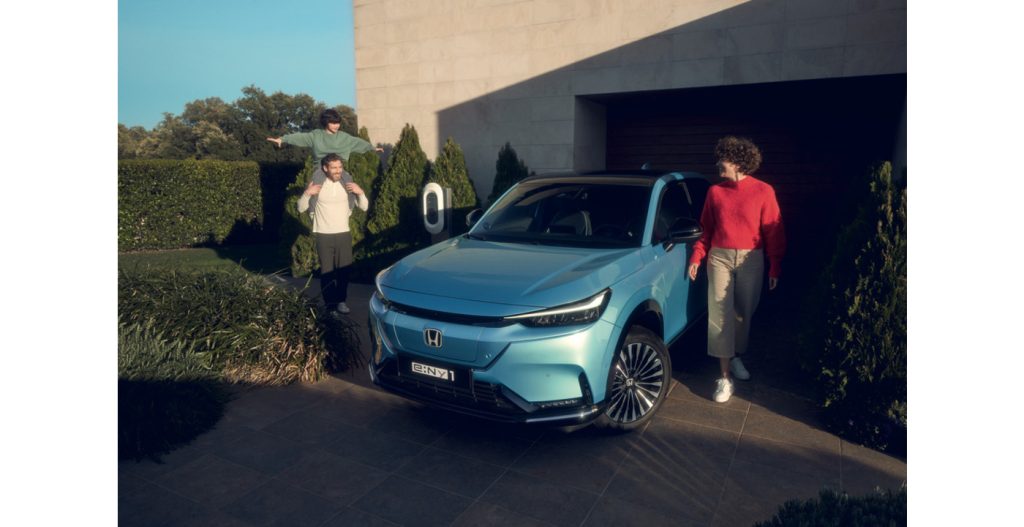As energy prices remain a hot topic in Europe, more households are exploring smarter, greener, and more cost-effective ways to manage electricity. Dynamic electricity tariffs are becoming increasingly common in European countries and can play a key role in enabling consumers to do this.
Their flexible pricing models offer consumers the opportunity to save money by aligning energy usage with real-time electricity prices, perfectly suiting Europe’s growing renewable energy landscape.
What Are Dynamic Electricity Tariffs?
A dynamic electricity tariff means your energy price changes every 15-60 minutes (time intervals will vary depending on your country and regions) based on supply and demand in the electricity market (EPEX SPOT). When solar and wind energy production is high, prices drop. When demand surges or renewable generation is lower, prices rise.
Instead of paying a fixed price for every kilowatt-hour (kWh), your cost reflects the current market situation. The result? You save by using power at the right times.

Graph To Show Example Dynamic Pricing From The UK market In May 2025.
Dynamic pricing is made possible with smart meters, which automatically collect your consumption data, usually every 15 minutes to one hour. These meters allow your provider to bill you according to actual market rates instead of an average price.
Berg Insight reported that at the end of 2024 roughly 63% of Europe’s electricity consumers had smart meters1. Despite this, adoption is varied, Germany is aiming to equip at least 20% of electricity customers with smart meters by the end of 2025, whilst across the UK the aim is to have 80% equipped with smart meters by the same deadline.
Why This Matters
With growing sources of solar and wind available on the grid, prices have become more dynamic. That creates an opportunity for consumers to actively benefit from the transition to green power.

Thanks to new regulations, smart meters are becoming more common. These meters are key to accessing dynamic tariffs, and there are plenty of utility providers offering them in the UK whilst providers like Tibber, Vattenfall, Yello, and Sonnen are offering them to households across Germany.
A recent study by Eurelectric found “60% of households remain unaware of utility programs like dynamic tariff rates, bill-reducing tools or financing options”2
Yet there is promise, for example 94% of French households have a smart and Spain has roughly 35% of residential consumers on dynamic time-of-use tariff contracts, well above the European average. This widespread adoption stems from the government’s choice to designate the dynamic PVPC tariff as the default regulated option for small consumers.
The rollout of smart meters is expected to accelerate, with millions of households to be equipped by the end of the decade. With the increasing electrification of transport and heating, timing your electricity use becomes more crucial than ever.
How You Can Benefit
Lower Electricity Bill
In Germany, by shifting energy use to times when prices are low, according to tado° consumers can save up to 35% on their electricity bills3. This can be especially attractive for large households or those with flexible routines.
For example: Running your dishwasher or charging your EV when prices are at €0.10/kWh instead of €0.30/kWh can cut costs significantly.
Households with electric vehicles, home batteries, electric underfloor heating, or heat pumps can particularly benefit. These systems consume a lot of electricity and can usually be programmed to operate at specific times.
Smarter, More Transparent Usage
Apps from providers show real-time prices, forecast trends, and even suggest optimal times to use appliances. You gain visibility and control over your energy habits.
Some tools even offer automation, such as scheduling EV charging or activating your boiler during cheap hours, without manual intervention. This reduces hassle and increases your savings potential.
Environmentally Friendly
Using electricity when renewable production is highest reduces CO2 emissions. That means your energy use is not just cheaper, it’s greener.
In 2024, Germany saw negative pricing for 468 hours, a 60% increase year-on-year. Similarly, in the UK, Modo Energy reported there was 149 hours of negative pricing in Great Britain, up from 107 hours in 20234. Households on dynamic tariffs could benefit from these moments, accessing significantly lower prices.
Who Is It For?
A dynamic electricity tariff could be for you if you:
- Own an EV and can charge flexibly
- Own solar panels and/or a home battery
- Have smart appliances or a home energy management system
- Want to reduce your carbon footprint
- Are willing to adjust your usage based on hourly prices
Even without tech upgrades, simple changes like running laundry during lower-demand hours can generate savings.
Dynamic tariffs are not only for early adopters or tech enthusiasts. Families, singles, retirees, and students can all benefit, especially if they are home during the day or open to minor behaviour adjustments.

What to be Mindful of
Severe Price Fluctuations
Prices can spike during high-demand periods. If you consistently use energy during peak times, you might not save much or could even pay more.
Despite this, rabbot.energy reported that despite a technical error on the EPEX power exchange in Germany which led to a price spike, monthly electricity bills were, on average, only affected by around €25.
Regardless, this is why automation or habit changes are important. Many providers send alerts when prices are high, helping you plan better.
Requires a Smart Meter
As highlighted above, adoption varies across Europe, so not all households have smart meters yet. Check with your local grid operator or provider to see if you’re eligible.
Providers often cover the installation costs, but you should clarify terms in advance. Once installed, the system runs seamlessly in the background.
How Much Can You Really Save?
While savings depend on individual usage patterns, studies have found significant savings.
For example, analysis from BFY indicates that, in the 12 months leading up to October 2024, customers in the UK on dynamic electricity tariffs saved approximately £1506, even without shifting their energy use from their typical consumption pattern6.
Find out what you could save using e:PROGRESS – Savings Calculator
The Next Step
Companies like Honda are making it easier to take advantage of dynamic pricing. Their e:PROGRESS service, for example, links EV charging with half-hourly electricity prices and clean energy. That means your car automatically charges when energy is cheapest and greenest.
By integrating charging with grid conditions, you not only save money but also support the stability of the electricity network.
It’s a sign of the future: intelligent, automated, and sustainable electricity use.
How to Get Started
- Check Your Meter: Contact your network provider to confirm if a smart meter is installed or can be installed.
- Compare Providers: Investigate offers from different providers to see what would be best for you.
- Use Tools: Download apps to monitor prices and set automation preferences.
- Track and Adjust: Start small by shifting laundry or charging to cheaper hours. Watch your usage and adapt gradually.
Dynamic tariffs may feel unfamiliar at first, but with just a bit of experimentation, the benefits become clear.
The Energy Model of the Future
Dynamic electricity tariffs are not just part of the evolving market; they’re a smarter way to power your life. With potential savings, a greener footprint, and more control, they align perfectly with Europe’s energy goals and consumer values.
As more renewable energy floods the grid and smart technology becomes standard, dynamic pricing will likely become the new normal. Households that adapt early will be well-positioned to save money and reduce emissions.
If you’re ready to embrace the energy future, this is your opportunity.
Sources
- Smart electricity meter penetration rate in Europe reached 63 percent at the end of 2024
- Publications
- tado° HOURLY: new dynamic power tariff reduces electricity bills
- Negative prices: Why do they happen and why will they continue to grow? – Research | Modo Energy
- Dynamischer Stromtarif – Das solltest du wissen
- Dynamic tariffs saved £150 on electricity for typical customers in…



